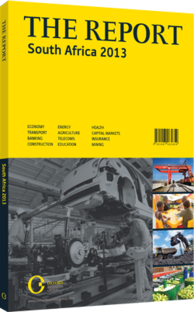Stable foundations: Cement producers have successfully weathered a tough patch
The cement industry looks set for a shake-up in the coming 12 months. With new supply coming to market and the major local players regrouping following the Competition Commission’s cartel ruling against them, pricing may begin to head in a more positive direction for the construction industry.
Foreign Competitors
It has been a difficult period for the country’s leading cement firms. The current key players in the market include: Lafarge Cement, Pretoria Portland Cement (PPC), Natal Portland Cement (NPC) and AfriSam Cement. The post-World Cup lull in building activity has had an adverse effect on sales volumes, while at the same time cheap imports have threatened their dominant local position. Making matters potentially more challenging is the entrance of new producer, Sephaku Cement.
At the end of 2013 the South African market is set to welcome its first new cement entrant for almost 80 years. Sephaku Cement, a 64%-owned subsidiary of Nigeria’s Dangote Cement and an associate company of the Johannesburg Stock Exchange-listed Sephaku Holdings, will be the first new cement producer in the country since 1934. In October 2012 the company announced it had secured a 10-year R1.95bn ($237.7m) financing deal with local banks Standard Bank and Nedbank. This debt should help the company as it looks to position itself in the market ahead of the government’s expected infrastructure building programme.
Quality Assurance
Although Sephaku Cement will be the first new entrant to the market, cement imports have already been causing problems for domestic producers. In 2011 for example, PPC and NPC made a complaint against Pakistan’s Lucky Cement, the largest cement importer into South Africa, for failing to meet local standards. However, following an investigation by the National Regulator for Compulsory Specifications (NRCS), Lucky Cement was cleared in August 2012 and continues to import into the country. In September 2012 and November 2012 the NRCS received additional complaints against Lucky Cement as well as Vietnamese suppliers. Although imports only account for a minor part of the cement market, domestic producers remain fearful of their price competitiveness. Paul Stuiver, then-CEO of PPC, told Global Cement News in November 2012, “The price of cement from Pakistan, India and Vietnam is low because electricity, fuel and transport rates are subsidised.”
While firms such as PPC and NPC have been aggressive in seeking regulatory intervention to block importers, they have also been on the receiving end of the regulator’s ire. The South African Competition Commission has accused four players – Lafarge, PPC, AfriSam and NPC – of cartel activity in an investigation that was initiated in 2008. PPC has already admitted to cartel practices, while Lafarge and AfriSam have reached a settlement with the commission for R149m ($18.2m) and R125m ($15.2m), respectively.
Oversupply
Given this intervention by the Competition Commission, and the prospect of new competition in the market, it could be an increasingly difficult environment for the leading producers but a more favourable situation for the construction industry. With supply far outstripping demand and market forces taking effect, cement prices within South Africa should come down. Ketso Gordan, the new CEO of PPC, told Global Cement News in January 2013 that new entrants causing oversupply would have an impact on the market in the first quarter of 2014.
Given the economic slowdown, industrial action and lack of construction activity, the first six months of 2013 have been difficult for cement producers. In the third quarter of 2012, cement sales in the country fell by 3.8%, following annual growth of 6.7% and 7% in the preceding two quarters. The cement performance has been following the general economic trends in the country, with GDP growth slowing to a troublesome 1.2% in the third quarter of 2012. The sector outperformed the 11.2m-tonne volume of graded cement sales in 2011 to reach 11.6m tonnes in 2012, according to data from the recently closed Cement and Concrete Institute.
You have reached the limit of premium articles you can view for free.
Choose from the options below to purchase print or digital editions of our Reports. You can also purchase a website subscription giving you unlimited access to all of our Reports online for 12 months.
If you have already purchased this Report or have a website subscription, please login to continue.

